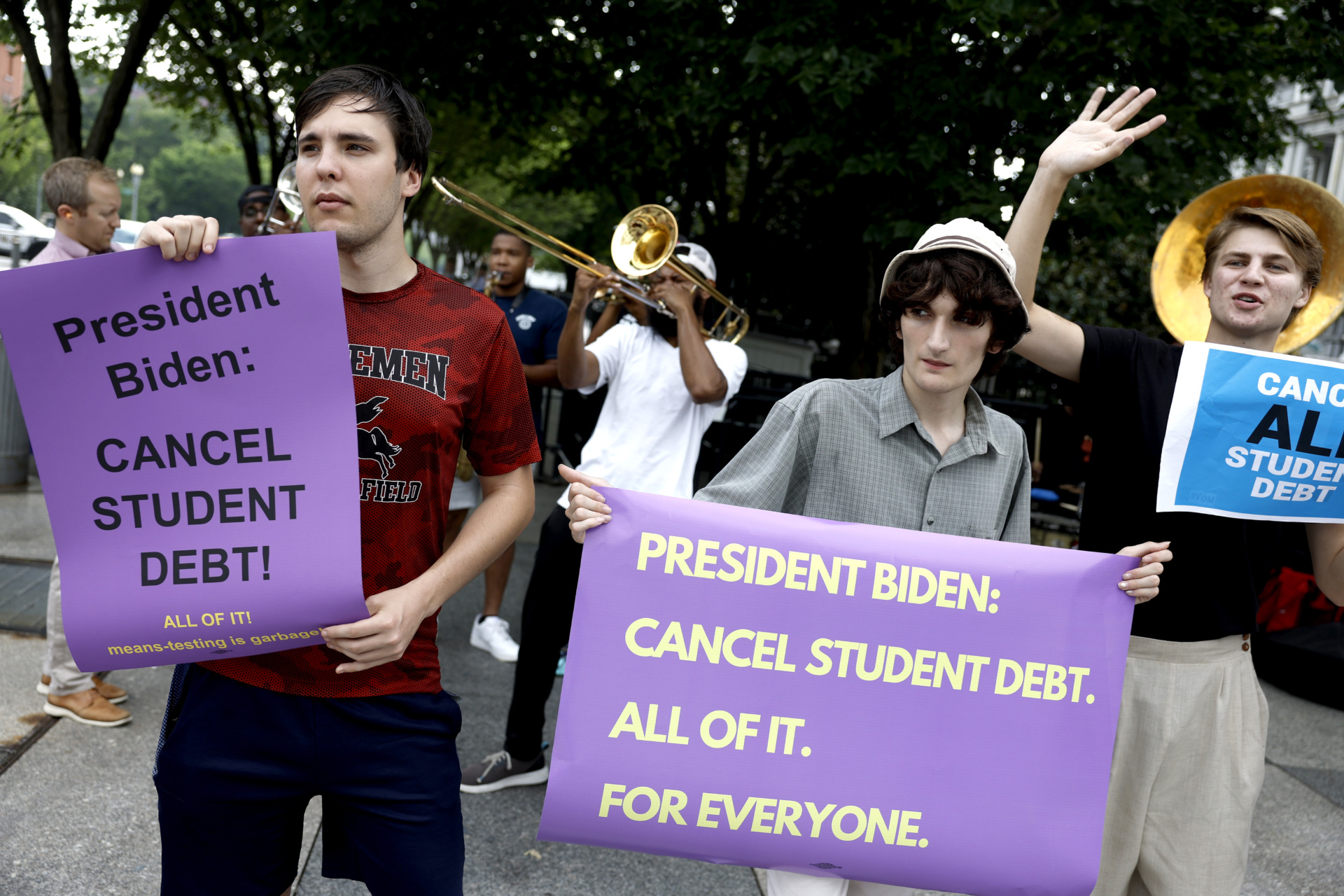
The debate over the Biden administration’s student loan scheme has somehow become even stupider as the week has worn on.
Now they’re claiming that not only is the plan not inflationary, they’ve got serious economists arguing that it will cut inflation.
Let us start with the simplest point: every man and woman with or without an economics degree who is denying that Biden’s student loan program is inflationary failed to see the rise in inflation that has beset America over the past fourteen months.
“We should recognise the current ‘inflation debate’ for what it is: a red herring that is being raised by those who would stymie the Biden administration’s efforts to confront some of America’s most fundamental problems,” Joseph Stiglitz wrote in June of 2021.
Meanwhile, back in April of 2021, we correctly identified the threat of massive inflation. “Inflation is fast becoming the hallmark of the Biden administration—Bidenflation, if you will,” we wrote.
It’s sadly not surprising to find the red-herring and transitory crowd once again downplaying the risk of a Biden program raising prices.
It’s always been perfectly obvious that delivering a half trillion dollars of loan forgiveness and extending the moratorium would add to inflation. The claims that it would not rely on a kind of three-card monte reasoning, where the cards are moved quickly to keep you from noticing that you are being cheated.

Activists attend a rally outside of the White House to call on President Joe Biden to cancel student debt on July 27, 2022, in Washington, DC. (Anna Moneymaker/Getty Images)
The partisan economists and their politician clients defending the plan say it is disinflationary because it restarts student loan repayments in December. While it is true that restarting the repayments will be deflationary, Biden just pushed back the date from September to January. So the effect is not to reduce inflation but to increase it in the near term and to delay the disinflation for four months.
That’s likely too optimistic. The original moratorium was announced in March 2020 and was supposed to expire in September 2020. Trump extended it to December 31 of 2020 and then a second time to January 31, 2021. One of Biden’s earliest actions as president was to extend the pause to September of 2021. In December of 2021, Biden extended it to May 2022. In April, he extended it to August 31 of this year. Why would anyone have confidence that Biden will allow repayments to begin on schedule next year? If anything, the economic situation is likely to be worse than it was in April or is in August because Federal Reserve rate hikes will soften the labor market. So the argument for an extension will be even stronger in January than it is today.
Extending the moratorium leaves borrowers with extra-spending power at a time when prices are rising rapidly. We expect that much of this will be consumed because borrowers will rationally seek to avoid the loss of value of their spending power due to inflation. In an economy where demand is already exceeding supply, nearly all of this additional consumption will get passed through to prices. No one really can say exactly how much but studies of mortgage assistance programs show that debt relief that increases liquidity—which is what a payment moratorium does—have large effects on spending. The Committee for a Responsible Federal Budget (CRFB) assumes a 90 percent pass-through from consumption to prices in its analysis.
The arguments of proponents of relief from student loans implicitly assume a high level of spending. They claim, for example, that forcing repayments to restart would cause debtors to cut back on other spending, causing hardship. There are complaints that borrowers cannot afford rent, groceries, and automobiles. Rep. Ro Khanna (D-CA) once claimed that canceling all student debt would increase spending by $174 billion in the first year alone, while creating 1.5 million jobs. Suspending all loan repayments is not the same as canceling all debt, but it may have similar effects in the short term—especially as borrowers grow to expect serial extensions. In other words, the very arguments of the proponents of extending the moratorium imply more consumption and labor demand—and therefore more inflation in a supply-constrained economy.

President Joe Biden speaks to reporters before boarding Air Force One at Joint Base Andrews in Maryland on August 26, 2022. (Nicholas Kamm/Getty Images)
The CRFB assumes the effect of suspended and decreased debt payments will be distributionally similar to COVID rebate checks and thus have a similar consumption multiplier of 0.5 times to 0.6 times, meaning around half of it will be spent. This strikes us as an underestimate. Many households that received the rebate checks faced severe constraints on spending due to shortages and social distancing rules—and many were not experiencing economic hardship. If the extension of the moratorium is necessary because debtors are facing hardship, the multiplier is likely closer to 1.0 times.
What about the outright debt forgiveness? The Biden scheme will forgive $10,000 for any individual earning less than $125,0000. Those who received Pell grants are eligible for an additional $10,000 of debt relief. The first effect of this is to raise the wealth of borrowers. This instant wealth boost would be expected to lead to additional spending for almost anyone, but there’s reason to believe this is especially true for relief from student debt. We’ve been told that the debt is a burden that holds borrowers back in numerous ways, including depressing home buying, investing, and wealth building. If that’s so, there’s likely a much higher than typical propensity to spend from the wealth boost for student loan forgiveness.
The CRFB analysis assumes two to five percent of the canceled debt is spent over the first year. We think that is also likely an underestimate for the same reasons we think the CRFB’s moratorium estimate is too low. Namely, the cohort receiving the boost will have a higher propensity to spend. How much higher? Our rough guess would be twice the CRFB estimate.
Our overall estimate is that the Biden scheme will add around 50-basis points to inflation. The Federal Reserve, of course, will attempt to offset this extra inflationary pressure by raising rates even further. Harvard economist Jason Furham estimated that it would take 50 to 75-basis points to offset his estimate of an additional 20 to 30-basis points of inflation. Since our estimate is around twice that, we’re talking about an additional 100 to 150-basis points in the Fed target. In a week when Fed Chairman Powell is already warning about the “unfortunate costs” and pain for households and businesses of higher rates, this is particularly troubling.
You cannot expect to inject that much money into the U.S. economy at a time when the economy is already operating above capacity and labor markets are extremely tight and imbalanced without putting upward pressure on prices. The Biden administration’s insistence otherwise is the latest example of trying to lead through wishcraft rather than statecraft.







